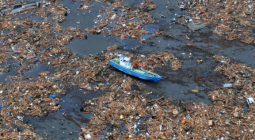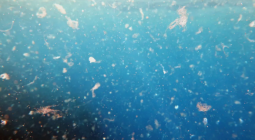Groundbreaking study finds huge amount of litter at deepest point in Mediterranean Sea
Plastic accounts for nearly 90 per cent of debris in Calypso Deep
A groundbreaking study has found one of the highest concentrations of deep-sea litter ever detected at the deepest point of the Mediterranean Sea.
Researchers discovered plastic, glass, metal and paper waste at the bottom of the Calypso Deep, a 5,112m depression in the Ionian Sea about 60km west of Greece’s Peloponnese coast.
Plastic accounted for nearly 90 per cent of the litter material, the study noted.
The research, published in the journal Marine Pollution Bulletin, emphasised the pressing need to implement global policies to cut marine waste and encourage changes in human consumption habits to protect the oceans.
“The litter abundance in the Calypso Deep, with 26,715 items per square kilometre, is among the highest ever recorded in a deep-sea environment,” the study stated.
Researchers from the University of Barcelona said the debris was likely carried to the Calypso Deep by ocean currents and direct dumping by boats.
“Some light waste, such as plastics, comes from the coast, from where it escapes to the Calypso Deep. Some plastics, such as bags, drift just above the bottom until they are partially or completely buried, or disintegrate into smaller fragments,” Miquel Canals, one of the authors of the study, explained. “We have also found evidence of boats dumping bags full of rubbish.”
Since the trench is a “closed depression” with weak currents, it favours the accumulation of debris. “Unfortunately, as far as the Mediterranean is concerned, it would not be wrong to say that ‘not a single inch of it is clean’,” Dr Canals said.
“The dive videos show the floor of the Calypso Deep littered by anthropogenic debris, with litter concentrations among the highest ever recorded in a deep-sea environment.”
To get to the depths of the trench, the researchers deployed an advanced crewed submarine called the Limiting Factor. Their images confirmed that marine litter reached even the deepest and most remote points of the Mediterranean.
The research vessel, built by Triton Submarines, carried two passengers to the deepest trenches, moving slowly at about 1.8km per hour and snapping high-quality images.
At the Calypso Deep, the submarine sailed about 650m in a straight line during a 43-minute stay near the bottom. The dive helped researchers calculate the density of marine litter at the bottom of the trench.
In some places, the researchers found different types of interaction between the debris and marine organisms. For example, they found instances of animals ingesting the debris and using it as a substrate in which to grow, hide or lay their eggs.
Cover photo: Human litter found at the bottom of the Calypso Deep (Caladan Oceanic)



